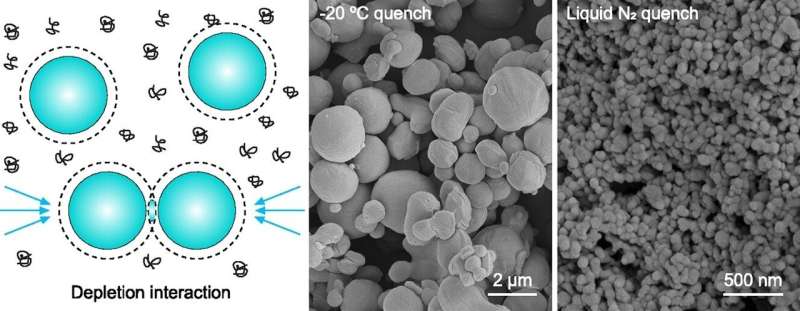
Therapeutic proteins have been increasingly used in recent years to treat cancer, HIV, and other diseases. A challenge with these types of drugs is that the release is rapid and thus the medicine must be administered frequently.
Remco Tuinier, Professor of Physical Chemistry at Eindhoven University of Technology (TU/e), and his team came up with a solution. They are developing a new method in which proteins no longer float around loose, but form solid packages. “I expect to see applications in the drug industry within a few years,” says Tuinier.
Protein-based drugs have become indispensable in the medical world. Among other things, they play a role in new cancer treatments. However, ensuring that these drugs do their job in the body is a challenge. Often the dose is delivered too quickly.
Proteins are naturally small (a few nanometers) and therefore spread quickly. To ensure slower release, it is more effective to allow them to form larger particles (aggregates) in a controlled manner. Techniques such as jet milling and spray-drying are currently used for this purpose. However, these methods can damage the chemical structure or function of the proteins.
How it works
To overcome this problem, Tuinier and colleagues have devised a new method. They are working with DSM Biomedical, a leading global company focused on developing materials for manufacturers of biopharmaceuticals.
It works like this: First, polyethylene glycol (PEG) (polymers) is added to a mixture of small particles. Then this mixture is quickly frozen. The PEG helps to properly concentrate the proteins into larger areas and then form aggregates that are fixed by freezing.
The research paper is published in the Journal of Colloid and Interface Science.
“As we add more polyethylene glycol, the proteins become stickier; they are drawn together more strongly. By combining this with lyophilization, we can form and stabilize the protein clumps. This causes the proteins to stick together in larger, but controlled clumps.”
If these protein aggregates are “packed” into even larger micron-sized particles often used in medical applications, this will help to regulate drug release more slowly and in a more controlled manner.
An important milestone was when Dr. Jiankang Song, the paper’s postdoc and first author, discovered the first microparticles, Tuinier recalls. “This was an exciting moment. We didn’t know then whether the freezing process, for example, would work too fast, keeping the proteins too small.
“Then we discovered that adjusting the final temperature during freezing affected the size of the aggregates. We then realized that our fundamental research of combining rapid freezing with the PEG-induced stickiness between proteins could well have a useful application in the pharmaceutical industry.”
Future treatments
The team now knows that the new method could be of great value in the medical world, where patients receiving cancer treatment now often receive injections. This could be reduced to far fewer injections because the drug remains effective in the body for much longer.
Now the method needs to be optimized, explains Tuinier. “We are investigating this further at TU/e, in collaboration with DSM Biomedical. To treat cancer or HIV, we need different types of proteins, each with unique properties such as size and charge. With a flexible approach, we ensure that our method is widely applicable.”
Normally it takes years to get a new polymer approved because extensive testing is required. “Now that is not the case, because the polymers we use have already been approved for similar applications.” Tuinier expects that within a few years, we will see the first drugs on the market developed using the new method.
More information:
Jiankang Song et al, Freezing-mediated formation of supraproteins using depletion forces, Journal of Colloid and Interface Science (2024). DOI: 10.1016/j.jcis.2024.03.088
Provided by
Eindhoven University of Technology
Citation:
New method enables gradual release of protein drugs into the body (2024, August 9)
retrieved 9 August 2024
from https://phys.org/news/2024-08-method-enables-gradual-protein-drugs.html
This document is subject to copyright. Apart from any fair dealing for the purpose of private study or research, no
part may be reproduced without the written permission. The content is provided for information purposes only.
